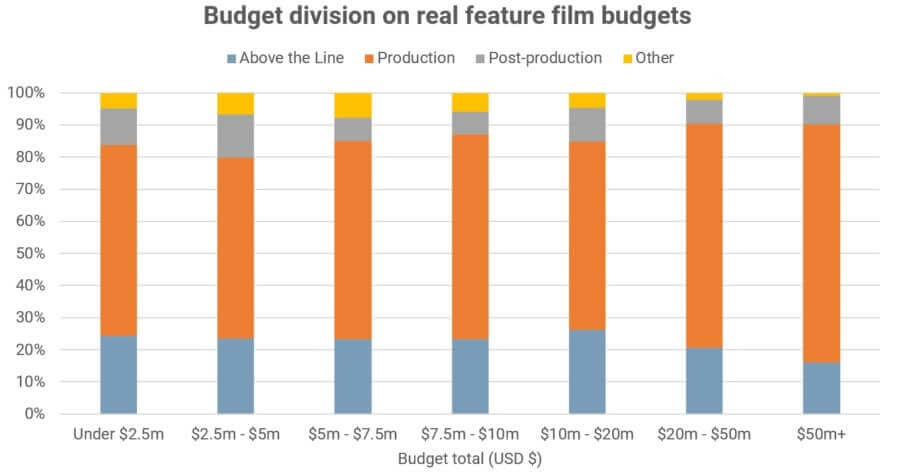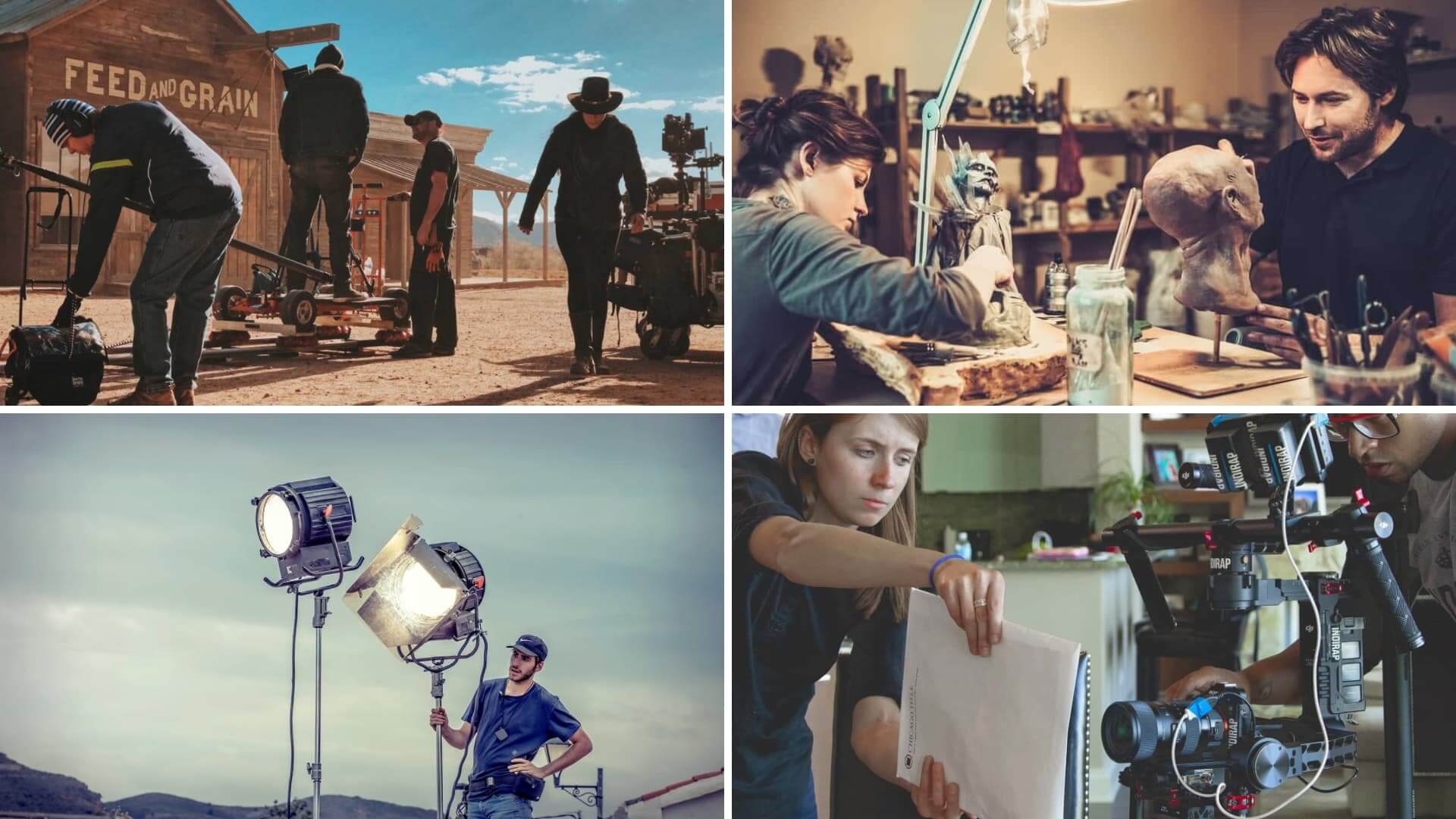What is below the line? If you are at all interested in the behind-the-scenes side of filmmaking, then you may have heard the terms “above the line” and “below the line” thrown around in interviews, articles, or BTS footage. Today, we’ll be providing a below the line definition, explaining where the term comes from, and who is considered below the line.
Below the line meaning
First, let’s define ‘below the line’
The terms ‘above the line’ and ‘below the line’ go hand in hand as they are, in fact, two sides of the same coin. If something isn’t above the line in the budget, then it is below the line.
Above the line vs below the line, there is no middle ground.
Below the line’s meaning is twofold in production. The term relates to both the division of a film’s budget, and the division of a film’s crew.
BELOW THE LINE DEFINITION
What does below the line mean?
Below the line in production refers to, in a budgetary sense, any production costs that are not "above the line." This can include film crew salary, publicity, music rights, and cutting together a trailer.
In addition to its budgetary relationship, below the line also denotes the roles on a film crew which are technical in nature and do not provide guidance or leadership on the creative side of a film. These crew members are not considered entirely “essential” and can be replaced part way through a production. Below the line talent refers to non-key cast members.
Above the line vs below the line
- Monetary designation
- Denotes certain roles on a film crew
- Standard across most film productions
To learn more about above the line vs below the line, be sure to read our article What Does Above the Line Mean? For a quick and easy-to-follow breakdown of film set hierarchy amongst below and above the line personnel, check out the video below.
5 Minute Film School breaks down film crew hierarchy
If you encounter any unfamiliar terms throughout this article, you can continue your filmic education by looking them up in our Ultimate Glossary of Filmmaking Terms.
Related Posts
Below the line talent
Why are crews divided this way?
The above and below the line terms come directly from budgeting. Film-production budget sheets were traditionally divided into two sections by a line. This budgetary line is why all film crew positions are placed either above or below the ‘line.’
Crew members placed 'below' are typically budgeted at a ‘variable rate,’ meaning that their pay can fluctuate based on certain factors affecting a production. If we were to look at the earnings of a best boy as an example. They may earn more than their standard rate on a day that runs long or pushes past lunch, and they will continue to be paid more for additional days of shooting or reshoots if they are brought back later on.
By the same token, that same best boy will not be paid for any days spent off-set, meaning if shooting is delayed, a day of production is canceled, or a scene/location is cut from the production schedule, that best boy may end up earning less money overall than they would have otherwise.
In the video below, Crash Course explains how and why certain film crew positions are placed on either side of the line.
Crash Course gives us a below the line definition
Above the line personnel are typically present for a film’s entire production span, but that might not necessarily be the case for below the line personnel. There are a number of reasons why these crew members may be swapped out during production. They may be replaced before a shoot has concluded at the discretion of the film’s producers or at the request of the director.
Below the line personnel may also be part of just one of multiple complete film crews involved in a production. This is especially common for films shot in more than one location since it is often easier to crew-up with locals rather than fly the entire crew to the next shoot location.
This is why you may see “L.A. Unit” and “New York Unit” listed in the credits of a film shot on both coasts. The same of course applies to globe-trotting films shot in multiple countries.
Other below the line crew members may only plan to be involved for a handful of days from the beginning as they jump between numerous productions, hence the term ‘day-players.’
The term ‘below the line’ first worked its way into filmmaking vocabulary as a purely budgetary term, but is now used to denote the level of importance and creative influence of crew members as well.
Below the line meaning
Which roles are below the line?
The short answer is: most of them. The long answer is: every film crew position aside from producers, directors, screenwriters, and the principal cast. This includes the likes of grips, gaffers, best boys, key grips, PAs, set dressers, extras, supporting actors, stunt performers, SPFX artists, UPMs, 1st and 2nd ADs, craft services, certain talent, etc, etc.

Below the Line on a real budget
These positions in production are considered technical and non-creative. Is it bad to be below the line? No, not at all. If you are below the line on a production, you are in good company. Even major positions are considered below the line such as the production designer, editor, and DP.
While it is true that positions like production designer, editor and DP do include a great deal of creativity in their work, the positions are not considered to hold creative influence over the film as a whole.
The reason for this is because those roles are meant to support the vision of the director and help them bring their film to life, rather than having their own personal creative vision.
When putting together a film crew, it is important to track both 'above' and 'below' personnel organizing, and managing a film crew can be difficult, but StudioBinder’s Film Crew Management Software makes it that much easier. Get started with our tools today for free. Within the management software you can create a custom list, add your contacts, and reorder that list in any way.
UP NEXT
What is above the line?
Now that you know what below the line means, it is the perfect time to read up on above the line too. Understanding the distinctions between above the line and below the line are key when budgeting or undertaking any sort of crew management.
